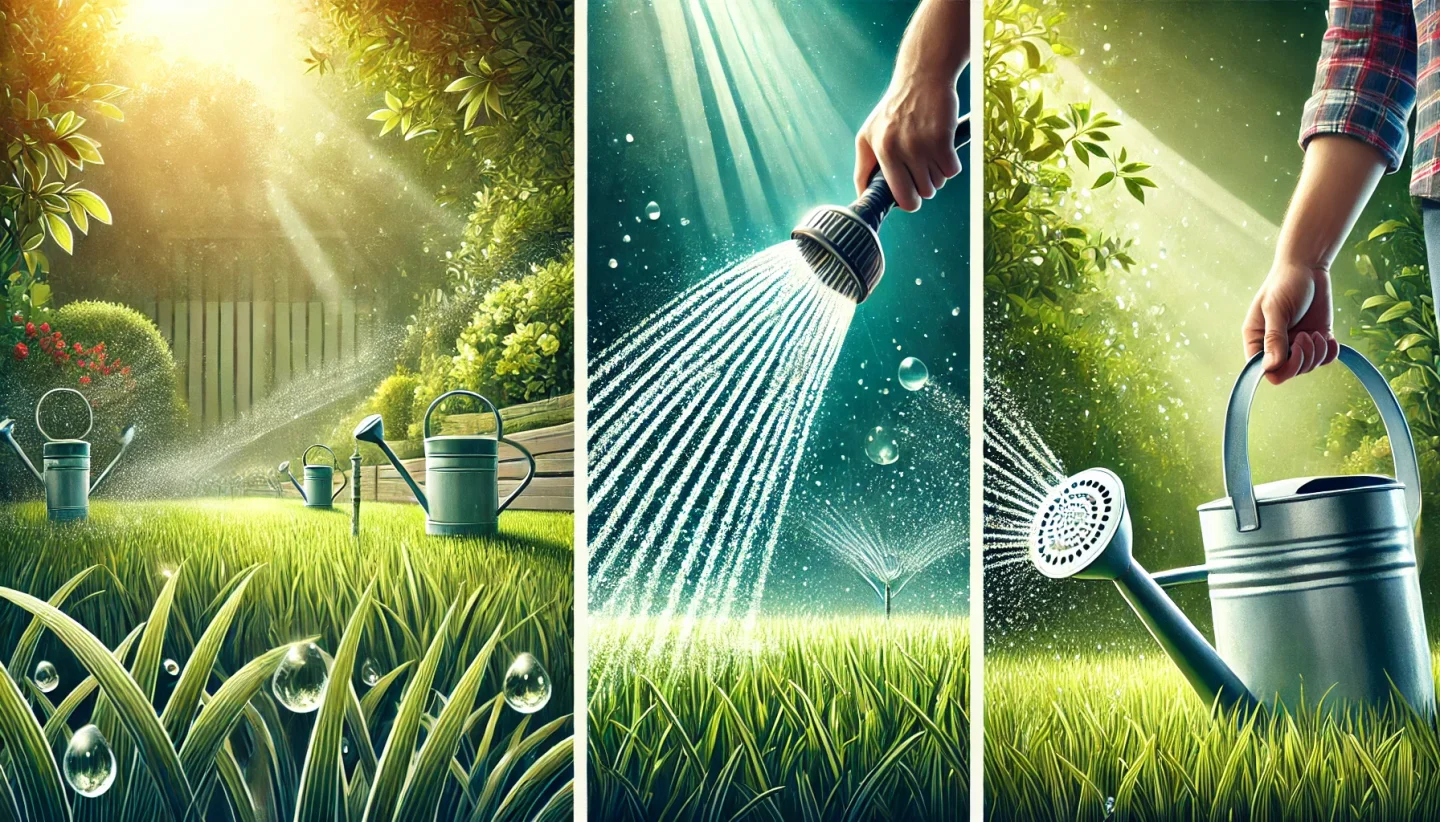Maintaining a lush, green lawn requires more than just mowing or fertilizing. One of the most critical factors is proper watering. Understanding when and how to water grass can help you ensure a healthy root system, reduce waste, and minimize the risk of lawn diseases. This comprehensive review will guide you through the best time to water your grass, as well as provide additional tips to help you keep your lawn vibrant.
If you plan to water your lawn only once a day, the single best time to do it is early in the morning, ideally between 4 AM and 6 AM. During these hours, temperatures are cooler and the sun is not at its peak, minimizing evaporation. This allows water to penetrate deeper into the soil, reaching the root zone more effectively.
Another key advantage of watering in the early morning is disease prevention. Because the grass has ample time to dry before nightfall, it’s less likely to develop fungal or bacterial issues. By sticking to this schedule, you’ll make the most of each watering session and help your lawn maintain a healthy, green appearance.
1. Importance of Proper Timing
Choosing the right time of day for watering is crucial. Watering too late or too early can lead to water waste, poor absorption, or even disease. Here are the top reasons timing matters:
- Root Development: Proper watering timing promotes deeper root growth, which helps the grass withstand drought and stress.
- Disease Prevention: Certain fungi and bacteria thrive in consistently moist environments. Watering at the wrong time can encourage disease by keeping grass blades wet longer.
- Water Efficiency: Watering when evaporation is minimal allows more moisture to penetrate the soil, reducing water waste and saving on utility bills.
2. The Optimal Time: Early Morning
Most lawn care experts agree that early morning, between 4 AM and 9 AM, is the ideal time to water grass. Here’s why:
- Reduced Evaporation: The sun is not at its peak in the early morning hours, so less water evaporates. This means more moisture reaches the root zone.
- Favorable Temperatures: Cool morning temperatures help water soak into the soil without evaporating too quickly.
- Disease Prevention: Watering early gives grass blades enough time to dry before nightfall, reducing the likelihood of fungal and bacterial growth.
3. Why Afternoon or Evening May Not Be Ideal
- Afternoon Watering: Watering in the afternoon, especially on hot days, leads to significant evaporation. This reduces the water’s effectiveness and can stress the grass if it cannot absorb enough moisture quickly.
- Evening Watering: While evening watering can reduce evaporation, the grass stays wet for a prolonged period, which increases the risk of lawn diseases. Additionally, cooler evening temperatures coupled with damp conditions create an ideal environment for fungi.
4. How Long and How Often to Water
Even if you water at the right time, over- or under-watering can still be problematic. Consider these guidelines:
- Deep, Infrequent Watering: It’s generally best to water deeply (about 1 inch of water per session) once or twice a week rather than giving your lawn frequent, shallow waterings. Deep watering encourages roots to grow deeper into the soil, making your grass more drought-resistant.
- Soil Type Matters:
- Clay Soils: Retain water longer but absorb it more slowly. Consider shorter, more frequent watering sessions to avoid runoff.
- Sandy Soils: Drain water quickly; thus, you may need slightly longer watering sessions.
- Check Moisture Levels: Use a screwdriver or moisture meter to check how deeply the water is penetrating. You want the top 6 inches of soil to be well-hydrated for optimal root growth.
5. Environmental Considerations
- Climate: In humid regions, morning watering is even more critical to prevent fungal disease. In arid or windy areas, you may need to adjust the timing or frequency slightly to reduce evaporation.
- Seasonal Changes:
- Spring: Lawns typically need less frequent watering due to spring rains and cooler weather.
- Summer: Higher temperatures and drought conditions often necessitate deeper or more frequent watering.
- Fall: As temperatures drop, gradually reduce watering. Overwatering in cool weather can contribute to fungus issues.
- Winter: In climates where lawns go dormant, watering may only be necessary during dry spells or if you live in a region where the grass remains semi-active.
6. Additional Tips for Effective Watering
- Use a Sprinkler System: If possible, invest in an automatic sprinkler system with a timer to water during the early morning hours consistently.
- Set a Rain Sensor: This prevents unnecessary watering when it has rained recently.
- Avoid Overwatering: Puddles or runoff are signs of overwatering. Set a timer or use smart irrigation controllers to prevent waste.
- Adjust to Weather: On cooler, cloudy days, reduce watering slightly; on hotter, sunny days, consider a bit more, ensuring the lawn receives that critical inch of water per week.
7. Common Mistakes to Avoid
- Watering at the Wrong Time: Late evening watering can invite disease; midday watering wastes water due to evaporation.
- Frequent, Shallow Watering: Encourages shallow root growth, making your lawn more susceptible to drought and pests.
- Ignoring Soil Compaction: If your lawn is compacted, water may run off. Aerate your lawn periodically to improve soil structure and water penetration.
- Using a Hose Haphazardly: Sprinkler systems or soaker hoses distribute water more evenly. Watering by hand can lead to inconsistent coverage unless carefully managed.
Watering your lawn correctly involves much more than simply turning on the sprinkler. Early morning provides the best balance between reduced evaporation, adequate soak time, and disease prevention. By focusing on deep, infrequent watering and adjusting for soil type, weather, and seasonal changes, you can maintain a healthy, vibrant lawn.
Remember to watch for signs of underwatering (such as wilted or discolored grass) or overwatering (mold, fungus, or puddles). With the right approach and timing, your grass can thrive and become the envy of the neighborhood.








